Figs are also rich in quercetin (1) and pomegranate peel also contains significant amounts of the phytonutrient, (2). Quercetin can act as a zinc ionophore when zinc is present and carry the zinc into infected or cancerous cells where the zinc disrupts replication, see the last post, and Treatments vs ‘a cure’.
Orange Marmalade is a sweet jam made from citrus juice and peel. I made a modified low sugar version using the orange zest part of the orange peel that I had been removing when eating an orange with the white pith left on (see last post – it acts as a decongestant fairly quickly when eaten in that large of an amount (the whole orange with the white pith layer left on).
*This was an initial attempt and turned out too thick – just skip the jam part of the recipe if you want to simply make a fruit sauce preserve. Freeze the amount that you won’t be able to use fresh within a week or two as low sugar fruit sauces or jam are more likely to spoil – the large amount of sugar makes jams and jellies less likely to spoil. See: How does sugar act as a preservative? (sciencefocus.com) However if the goal is a way to preserve citrus peel for antiviral benefits than low sugar is going to be more supportive of immune function than a full sugar product.
— the point is not a recipe – the point is demonstrating a way to save time and preserve a large batch of outer citrus peel at once so small amounts can be used throughout the day and keep congestion cleared. Fruit preserves can be a mix as the jam package suggests and the basic ratios and which fruits might be more similar in acidity are grouped together on the instruction sheet pectin package.
*simpler way to get bioflavonoids in the diet of many people at once -add powdered citrus bioflavonoids citrus bioflavonoid powder to applesauce or yogurt or a smoothie type beverage or a breakfast porridge or soup. It is available in varied concentration. The preserved citrus jam could be used in a similar way but might be stronger in flavor than a concentrated powder.
I also had some fresh pomegranate peel on hand which I had peeled the outer more tannin rich layer from, (4), and an eight ounce package of dried figs and one pear for sweetness and to reduce the acidity somewhat.
Stevia is an herbal alternative sweetener which also has health benefits, including activation of the p53 protein, (3, also discussed in the last post), and I used a low sugar pectin mix that uses calcium to aid in gelling, Pomona’s Universal Pectin. It includes basic recipes that you can modify depending on your available fruit and sugar preferences. So without going into the specific jam details, here is a list of ingredients that I used, roughly estimating it as a double batch, however it thickened readily and I could have used pectin and calcium for one batch. (pomonapectin.com)
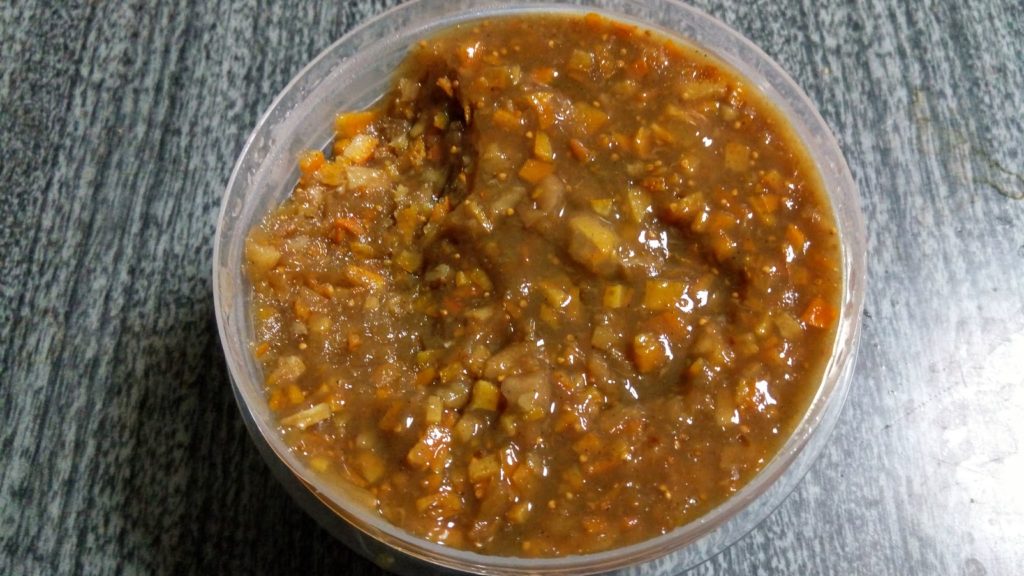
Citrus Fig Savory Marmalade: Ingredient list (trial 1)
- 2 1/2 cups minced orange peel
- 1 1/2 cups minced inner pomegranate peel
- 1 cup pear, peeled and minced
- 1 1/2 cups figs, stem removed and minced, (8 ounce package dried)
- 4 cups water
- 1 tablespoon cardamom, powdered spice
- 1 cup brown sugar – added to the stewing fruit, simmer gently to preserve phytonutrients, approximately 20 minutes to soften the citrus peel.
- 6 tablespoons lime or lemon juice, bottled – for a double batch following the Pomona’s directions
- 2 tablespoons of the calcium water solution – for a double batch
- 1 cup Stevia sugar substitute with 1/2 cup = 1 cup sugar – measure into a separate bowl and mix in the pectin powder – to add to the fruit at the end, stir in thoroughly and let simmer for 1-2 additional minutes
- 3 tablespoons of the Pomona’s pectin, (pomonapectin.com)
The jam cooled to a firm consistency, I could have used a single batch of lime juice, calcium water, and pectin. It made six cups which I froze most of and will keep the rest in the refrigerator as low sugar jams are more likely to mold/spoil than full sugar jam – the large amount of sugar acts as a preservative as it is too concentrated for bacteria to grow in, though mold may still occur. See: How does sugar act as a preservative? (sciencefocus.com)
The jam is mildly sweet and slightly spicy with the cardamom which also may have some antiviral and anticancer benefits by helping activate the p53 protein, which is involved in apoptosis – the killing and safe removal of infected or cancerous cells by our white blood cells. (6)
In addition to using a spoonful on toast, it is good added to a breakfast hot cereal or yogurt and would be easy to add to a cookie recipe if fresh orange peel isn’t available, see previous post: Dark Chocolate Orange Peel Cookies – Recipe.
Health can taste delicious. The taste buds will become more sensitive to the natural sweetness in foods after eating a lower sugar diet for a while.
The following is a series of jam/jelly recipes using citrus and pomegranate peel (fresh and/or dried/powdered). Both citrus and pomegranate peel have anti-inflammatory and other health benefits including antiviral properties.
The simplest way to prepare citrus peel for later use would be to mince the washed peel (collected over a few days in the refrigerator), and simmer it with water and a little brown sugar and possibly a spoonful of coconut oil or butter to help draw out fat soluble phytonutrients.
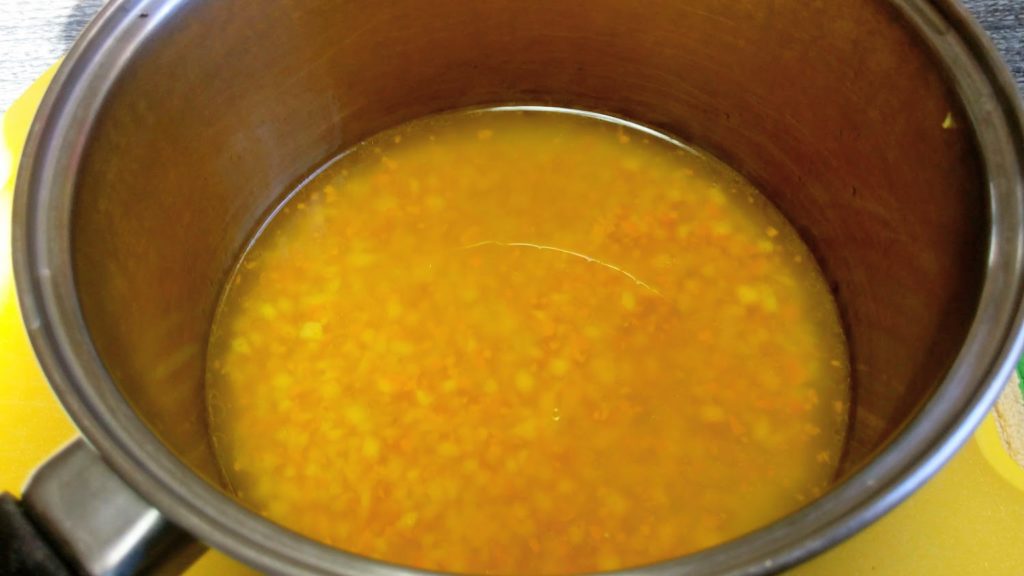
Citrus Plum: Ingredient list (trials 3 & 3.2)
- 1 1/2-2 cups minced orange peel
- 1 1/2 cups minced inner pomegranate peel and/or 6 tablespoons powdered dehydrated pomegranate, inner peel
- 2 cups plums, minced
- 1 cup prunes, minced,
- 3 cups water – if more or less fresh fruit is available then adjust the water up/down to make up the difference, leaving a cup to simmer the citrus peel for a few minutes initially with the brown sugar, before adding the fresh plums and other ingredients.
- 1-2 teaspoon cardamom, powdered spice
- 1 cup brown sugar – added to the stewing fruit, simmer gently to preserve phytonutrients, approximately 20 minutes to soften the citrus peel.
- 6 tablespoons lime/lemon juice, bottled, or 2 Tbs apple cider vinegar
- 2 tablespoons of the calcium water solution – for a double batch
- 1 cup Stevia sugar substitute with 1/2 cup = 1 cup sugar – measure into a separate bowl and mix in the pectin powder – to add to the fruit at the end, stir in thoroughly and let simmer for 1-2 additional minutes
- 2 teaspoons of the Pomona’s pectin, (pomonapectin.com), if the 6 tablespoons of powdered dried pomegranate inner peel is used. The fresh pomegranate peel and citrus peel have pectin type fiber and less additional pectin may be needed to thicken the jam or jelly made with it, however the powdered dried peel is more thickening. Some additional pectin still seems to be needed for a full gel reaction
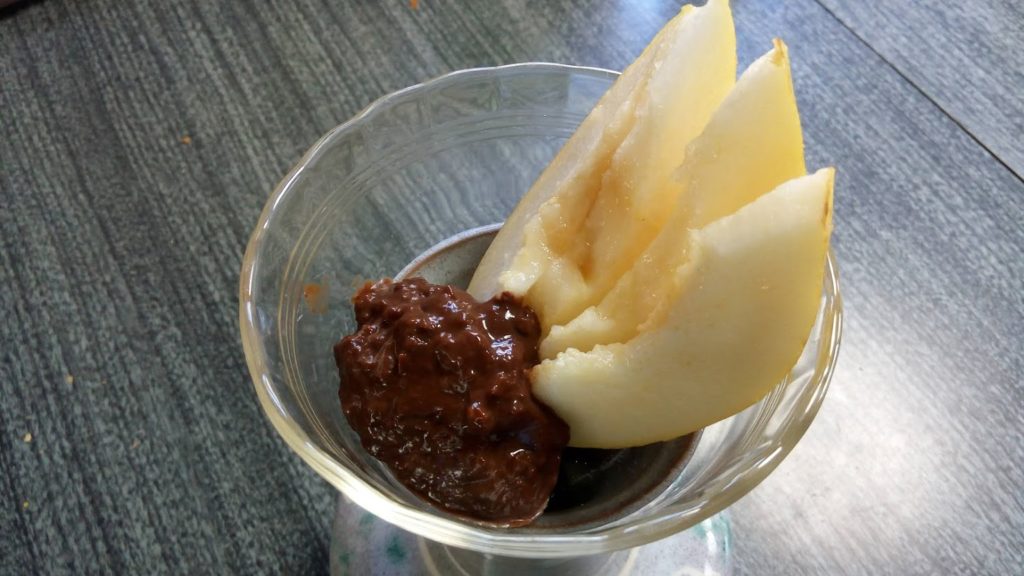
Citrus Chocolate Ganache/Fudge sauce
Simmer one-two cups of the citrus plum jam in a double boiler, – metal bowl that fits in a sauce pan that has a couple inches of simmering hot water – and add one teaspoon of vanilla, (optional), and one tablespoon coconut oil per cup of jam, stir until it is mixed in evenly, and then add 1/4 cup cocoa powder per cup of jam, stir until the powder is all incorporated into the chocolate fudge mixture. It will be lumpy because of the fruit pieces but the chocolate sauce should mix into a chocolate-y smoothness where there isn’t fruit pieces.
Whether the mixture will be a thin or thick sauce or a frosting like ganache texture depends on the ratio of cocoa powder to liquid that you use. Pomegranate juice could be used to thin the ganache if a sauce were needed. Thicker ganache can be rolled into truffle like dessert candies, coated with cocoa powder to prevent stickiness. Store and serve chilled from the refrigerator or freezer.
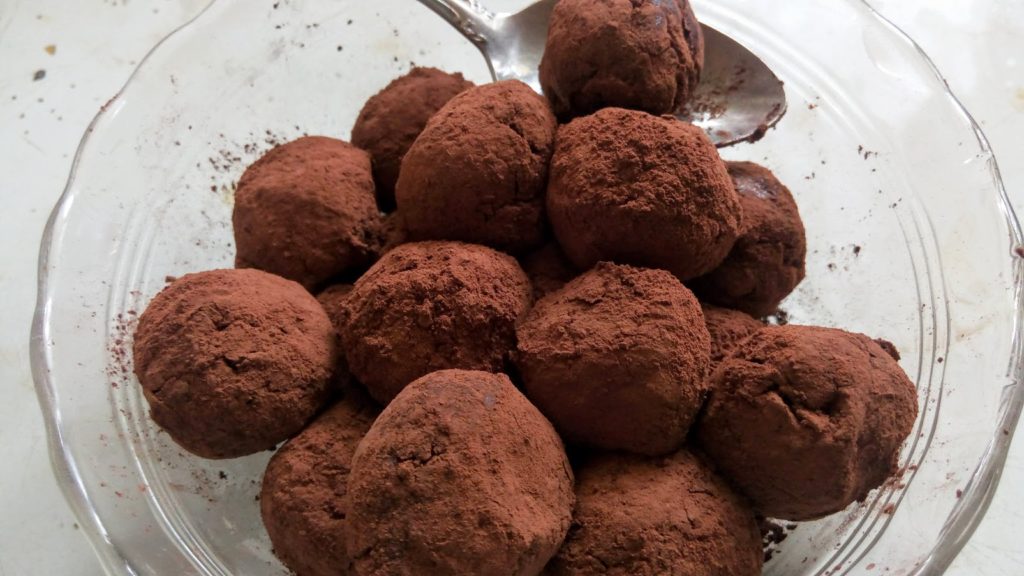
Pomegranate Jelly, made with powdered pomegranate peel (and violets) – ingredient list
- 6 tablespoons powdered dehydrated pomegranate, inner peel
- 4 cups pomegranate juice
- 1 cup violets, (optional) rinsed and drained gently
- 1 cup brown sugar – added to the stewing fruit,
- 2 Tbs apple cider vinegar or lime/lemon/juice (I was making a citrus free batch for people with allergy).
- 2 tablespoons of the calcium water solution (if using Pomona’s Pectin)-
- 1 cup Stevia sugar substitute with 1/2 cup = 1 cup sugar – measure into a separate bowl and mix in the pectin powder – to add to the fruit at the end, stir in thoroughly and let simmer for 1-2 additional minutes
- 2 teaspoons of the Pomona’s pectin, (pomonapectin.com), if the 6 tablespoons of powdered dried pomegranate inner peel is used. The fresh pomegranate peel and citrus peel have pectin type fiber and less additional pectin may be needed to thicken the jam or jelly made with it, however the powdered dried peel is more thickening. Some additional pectin still seems to be needed for a full gel reaction
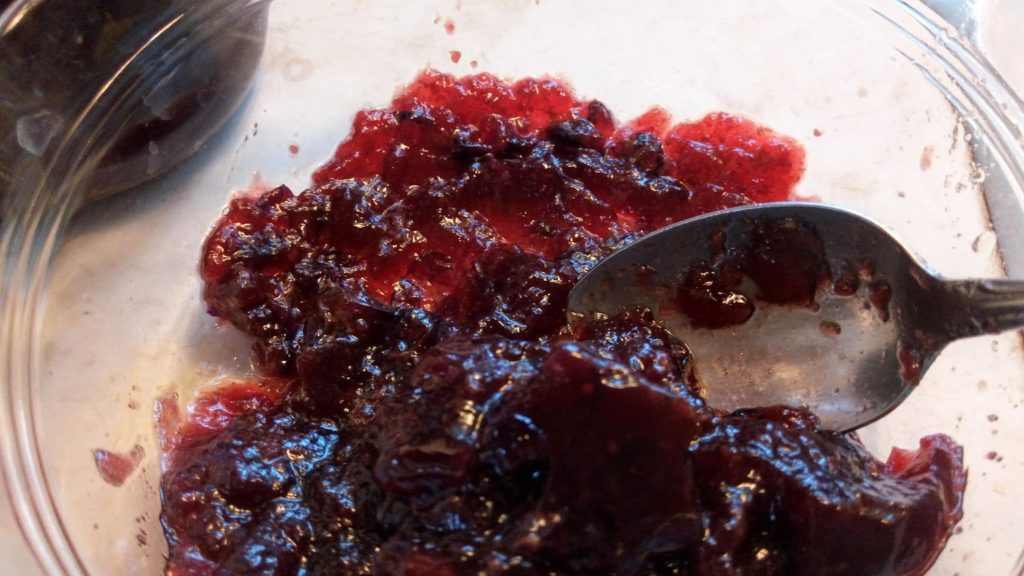
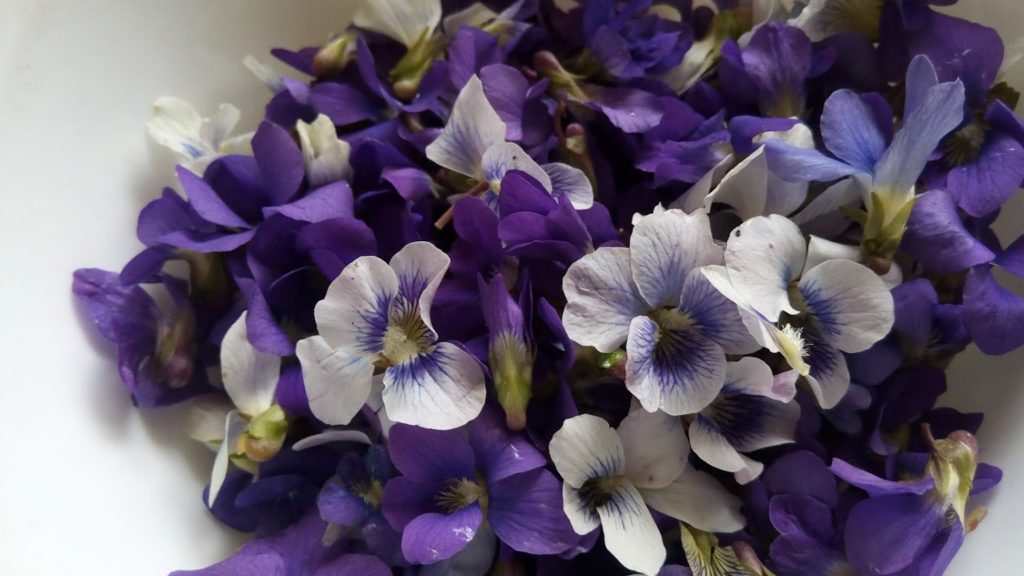
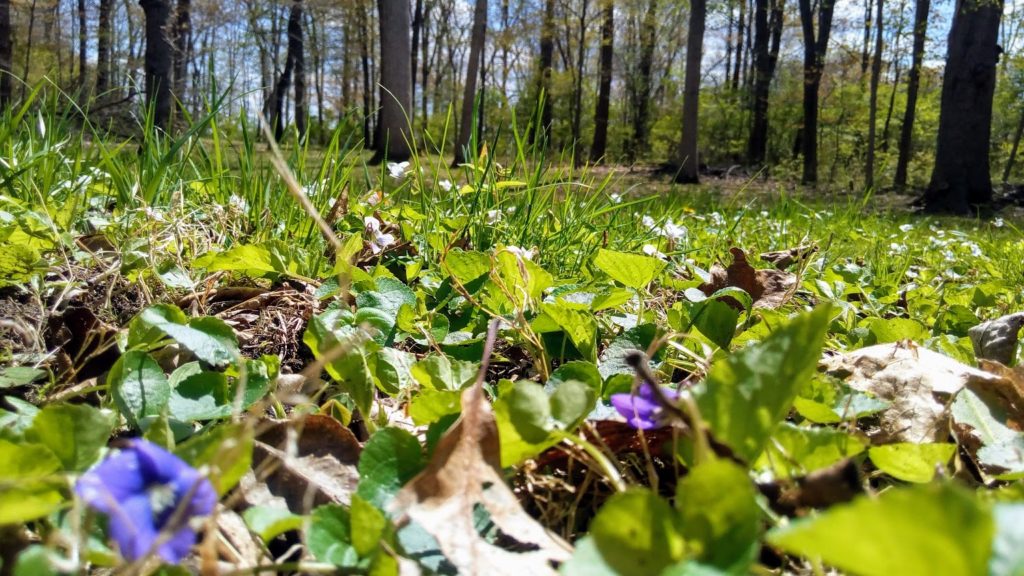
*Why violets? – they contain a fragrance phytonutrients that may help protect against retinal deterioration common with aging, and increase melanin production in the skin, helping protect against skin cancer potentially. How many violets is a serving? They are peppery, I enjoy eating a a few at a time.
Reference List
- Brian, 93 Quercetin Rich Foods, 2 October 2018, MyIntakePro.com https://myintakepro.com/blog/quercetin-rich-foods/ via @HiperacusiaCAT
- X. Zhao, Z. Yuan, Y. Fang, Y. Yin, and L. Feng, Flavonols and Flavones Changes in Pomegranate (Punica granatum L.) Fruit Peel during Fruit Development. J. Agr. Sci. Tech. (2014) Vol. 16: 1649-1659, http://citeseerx.ist.psu.edu/viewdoc/download?doi=10.1.1.1021.8526&rep=rep1&type=pdf
- Chen J, Xia Y, Sui X, et al. Steviol, a natural product inhibits proliferation of the gastrointestinal cancer cells intensively. Oncotarget. 2018;9(41):26299–26308. Published 2018 May 29. doi:10.18632/oncotarget.25233 https://www.ncbi.nlm.nih.gov/pmc/articles/PMC5995179/
- J. Depew, G13. Pomegranate – Health Benefits and Preparation, effectivecare.info, https://effectivecare.info/g13-pomegranate
- Divya Sehgal, How does sugar act as a preservative?, sciencefocus.com, https://www.sciencefocus.com/science/how-does-sugar-act-as-a-preservative/
- Yu‐Jen Jou Chao‐Jung Chen Yu‐Ching Liu, et al., Quantitative phosphoproteomic analysis reveals γ‐bisabolene inducing p53‐mediated apoptosis of human oral squamous cell carcinoma via HDAC2 inhibition and ERK1/2 activation. Proteomics, 15;19, Oct 2015, pp 3296-3309, https://www.ncbi.nlm.nih.gov/pubmed/26194454
